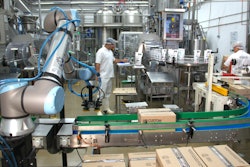Quick hits:
- The Plant-Based Foods & Proteins Summit brought brand owners, ingredient suppliers, technology companies, and research institutes together to better understand top industry goals.
- The plant-based market has grown 54% since 2018, with a 28% rise in 2020 alone, according to the Plant Based Foods Association.
- Plant-based creams and creamers are seeing particularly explosive growth, Spins says. Overall, dairy rules the plant-based sector.
- The plant-based meats market is forecasted for substantial growth with a CAGR of 15%
- Consumers’ plant-based eating habits remained stable over the past year
- Plant-based meats appeal to younger generations
- ERP System Helps Startup TMRW Foods Grow in the Right Direction
- Carnivores, Herbivores, Omnivores… Meet Me Where You Are
- Plant-based Meat Market by Source, Product, Type, Process, and Region - Global Forecast to 2025
- Global Plant Based Meat Market Report 2021-2027
- Revenue Management Solutions Restaurant Consumer Report 2022
 | Read the transcript below: |
Hi, welcome to Take Five, I’m Melissa Griffen, Contributing Editor at ProFood World magazine. According to MarketsandMarkets—a competitive intelligence and market research platform—the plant-based meats market was estimated to be valued at USD 4.3 billion in 2020 and will grow to USD 8.3 billion by 2025 with a CAGR of 14%. ResearchAndMarkets—a market research store—says that the worldwide plant-based meat market was USD 5.6 billion in 2020 and is forecasted to reach USD 14.9 billion by 2027 with a CAGR of 15%.
Clearly the market is on the rise, but how are consumers reacting to these meat alternatives? Revenue Management Solutions—a global business helping restaurants make data-driven decisions to increase profits and margins—held a survey in November of 2021 with 802 restaurant goers across the United States. The individuals surveyed came from varying age groups and backgrounds.
The numbers indicated that consumers’ plant-based eating habits remained stable over the past year, with the biggest change being a 5% increase in the number of individuals eating plant-based meat once a month. However, it also showed that though there are more plant-based meats available than ever before, consumers are responding poorly to them. There was a 7% decrease in positive responses to the taste of the products, and a 10% increase in consumers disliking the very concept of plant-based meats.
Yet, the survey also showed that these numbers depend on the age group of the individual as 56% of Gen Z-ers report liking the taste of plant-based meat, which is 13% more than the overall response. The survey further reports that consumers are expecting plant-based meat products to be priced the same as meat-based products, instead of more expensive.
For more on Gen Z and millennial influence on the market, check out the full story at the URL on screen. Editor-in-Chief, Aaron Hand, will present his findings from the Plant-Based Foods and Proteins Summit.
I’m Aaron Hand, editor-in-chief of ProFood World, here now to share with you a bit from the recent Plant-Based Foods & Proteins Summit in Chicago.
This was a great look into how technology companies are planning for the future in what is still a nascent industry on a growth trajectory. At this point, there are huge gaps in what’s considered important by the brand owners, the ingredient suppliers, the process technology companies, and the research institutes. So the idea behind the summit was for each of those groups to better understand each other’s goals.
Presentations came from all parts of the value chain. Some broader insights into the plant-based industry came from Christian Flinn of the Plant Based Foods Association. The general shift away from animal-derived foods is here to stay. The plant-based market has grown 54% since 2018. It grew 28% in 2020 alone, and still saw a 6% rise in 2021.
With some further insights into the state of the plant-based industry, Meghana Kodali from Spins noted that the refrigerated space is the largest, and dairy is really king right now. Creams and creamers are seeing particularly explosive growth. Although shelf stable is the smallest from a revenue perspective, she said, this space is ripe for innovation.
During a morning break, I was joking a bit with the woman standing next to me about how—from a snack table full of plant-based cupcakes, cookies and brownies—she and I had actually chosen plants (an orange and an apple). What I didn’t realize is that she was about to give a presentation in which she commented on that very notion, where we forget about how good the plants are already and we work so hard to turn them into something that looks like meat or cupcakes.
Lindsay McCorkle, from Blue Horizon, was largely talking about how the plant-based food industry could help reduce the carbon footprint of the food industry. But she also emphasized the need to diversify the plants we’re using. We’re asking an awful lot of the plants—asking soybeans to act like cows, for example. “When you process them that much, it takes away some of the natural benefits,” she said, then asking, “Is there a better way to utilize plants without processing them so much?”
Many of the presentations I sat in on came from the technology companies, and they had a wide range of ideas about how best to handle that processing. Keep an eye out for the August issue of ProFood World, where I’ll cover many of those technologies in our Tech Today feature. In the meantime, you can read more on some of our latest plant-based protein coverage from the links below.
Thank you for joining us today. If you have any other topics that you’d like us to cover in a Take 5 video, or if you’re interested in participating, please get in touch with me at [email protected].





















